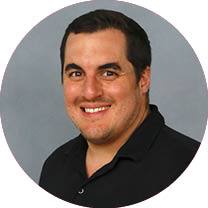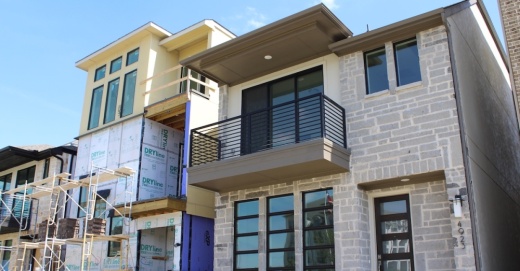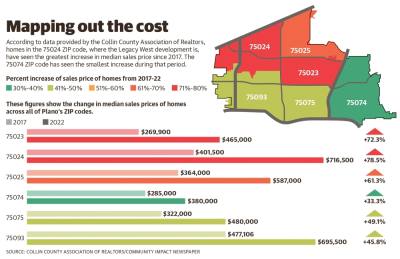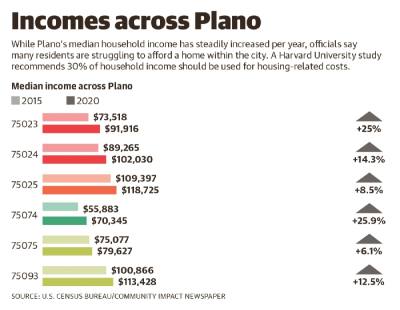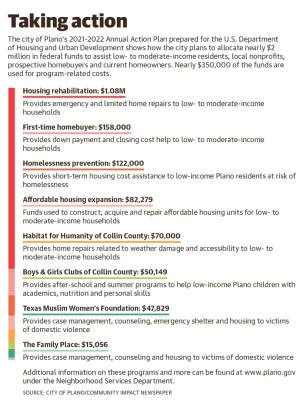A housing trends study that has been updated annually since 2008 by Plano’s Neighborhood Services Department states that the average income of Plano residents has not kept pace with housing costs. Those earning an average wage can no longer afford a medium-priced home in the city, according to the study. Based on data from the Collin County Association of Realtors, the median price of a home sold in Plano during March was $518,000.
According to the 2020 U.S. Census, the estimated median household income in Plano is $96,348. That figure is nearly 43% higher than the $67,521 estimated median household income across the U.S. Because of the demand for housing in Plano, city officials and real estate experts have said workers earning an average wage likely do not make enough to purchase a home in the city.
“It is a dilemma because even the housing stock that’s being [developed] is going to be so much more expensive than that same home or townhome or an apartment would have been 10 years ago,” Mayor John Muns said. “So what could have worked [then] is now unaffordable.”
Muns said it is important that the city maintains Plano’s high-quality neighborhoods and living standards while also finding more ways to make it a place where teachers, firefighters and police officers, or those earning similar incomes, can own homes. A Harvard University study states that 30% of total household income is recommended for housing-related costs. Plano ISD’s fiscal year 2021-22 budget shows the starting teacher salary is $56,000 for those with a bachelor’s degree. A Plano police recruit starts at $70,555, the city’s website states.
“I have been struggling for the last 20 years trying to figure out how to get teachers and police [officers] to live in Plano,” Muns said.
According to the housing trends report, the share of commuters—as opposed to Plano residents—who make up the city’s workforce is likely to continue growing.
“We are doing our best to come up with some solutions,” Muns said. “It is not easily solvable.”
Taking action
Many of those solutions come from federal housing assistance funds, city programs and grant money distributed by Plano’s Neighborhood Services Department. The department is tasked with creating suitable living environments, providing decent housing and expanding economic opportunities for Plano citizens as part of its 2021-22 Action Plan. The plan is prepared annually for the U.S. Department of Housing and Urban Development.
During its May 9 meeting, City Council approved a resolution to amend the value limits set by HUD for its Home Investment Partnerships Program in Plano. That federal program provides funds to local governments to increase housing affordability for low-income residents. The program states the funds cannot be used to assist with the purchase or repair of a home worth more than $285,000, but that limit can be raised.
Council voted to increase that limit for Plano to $418,000, a figure determined by local real estate data, city documents state.
In total, the city will use about $2 million in federal funds this year to assist low- to moderate-income residents with housing-related costs. Shanette Eaden, neighborhood services housing and community services manager, said the department tries to do as much good as it can with the available funds.
“In total, that is not a lot of money, but it’s the most amount of money that any city in Collin County gets,” she said.
Eaden said a variety of market factors have contributed to the city’s housing affordability issues.
“What we realized when looking at the [housing study] is people are coming,” she said. “We have the land; we have opportunities, great economic development [and] businesses ... and we aren’t building as fast as they are coming.”
Eaden said Plano has an older housing stock with many homes being built over 25 years ago and needing upgrades. She said residents who live in these homes are often at retirement age and on fixed incomes.
Lori Schwarz, the city’s director of neighborhood services, said there is not much room left in Plano to build new housing. Conserving the affordability of existing units through federal funding or programs, such as the city’s Great Update Rebate, is a priority for the department, she said. The rebate program gives tax incentives to some of the owners of older houses in Plano if they invest in renovations and improvements to their properties.
“When people are wanting to move here, we want them to have housing that is up to current market demand,” Schwarz said.
The housing affordability issue in Plano and the entire Dallas-Fort Worth region, she said, is not as simple as just building cheaper units.
“Construction costs right now have risen,” Schwarz said. “That has affected general housing affordability for everyone.”
Increasing demand
Kimberly Woodard, a Realtor with Ebby Halliday in Plano, said the city is known among prospective homeowners for its quality school system, safety and thriving business sector. Woodard said the COVID-19 pandemic saw many residents across the country moving to Plano.
“When people started working more from home ... they could work wherever. We started seeing a lot of companies relocating to Plano,” Woodard said. “So, there is a combination of things.”
Officials with the North Central Texas Council of Governments have estimated that between 40-80 people are moving to Collin County every day. Because the amount of available homes cannot keep up with that demand, Woodard said Plano has become a “seller’s market.” That competition, she said, can often price out those who cannot afford to raise their total offer or make large down payments.
“If you are looking at something listed in the $300,000 range, you’re going to end up ultimately closer to $400,000,” she said.
Woodard said some buyers will make entire cash offers, which is often attractive to sellers. She said down payment assistance programs, such as the ones offered by Plano’s Neighborhood Services Department, are helpful for low- to moderate-income buyers. However, homes often do not stay on the market throughout the long application process, she said. Getting financing preapproved and offering higher than the asking price is the best way for noncash buyers to be competitive, according to Woodard.
“At the end of the day, they are competing with a cash buyer,” she said. “You might need to pay $500,000, even if [the home is] listed at $420,000.”
While prices may continue to rise, Eaden and Schwarz said the city will continue expanding its programs to give as many people in Plano an opportunity to buy their own home.
“The hope would be that if someone wanted to live here ... they could,” Schwarz said. “That is the big picture: that if you work in Plano, you would be able to live in Plano.”


